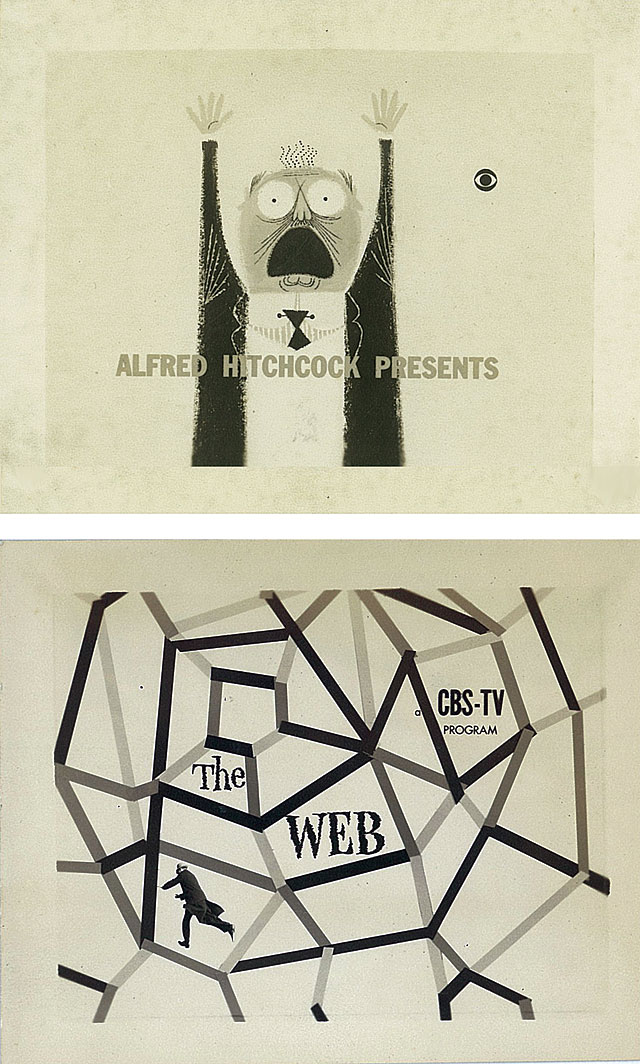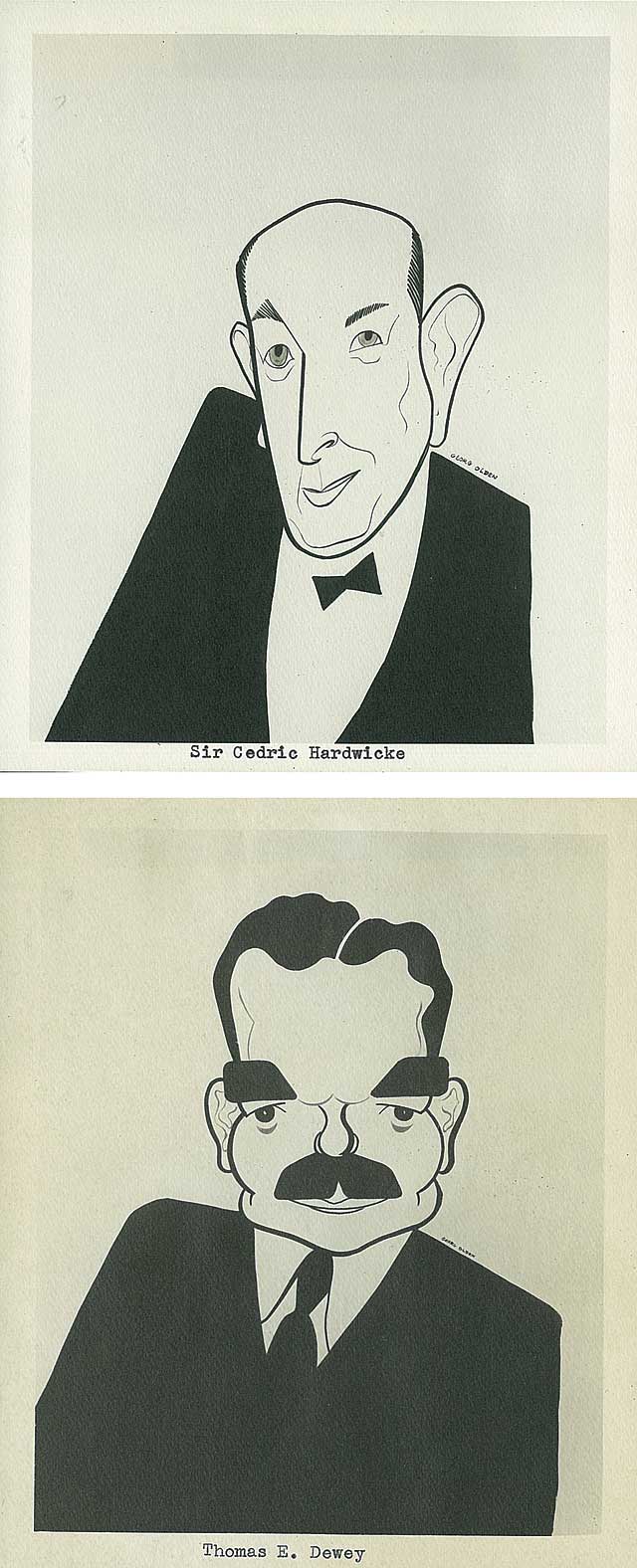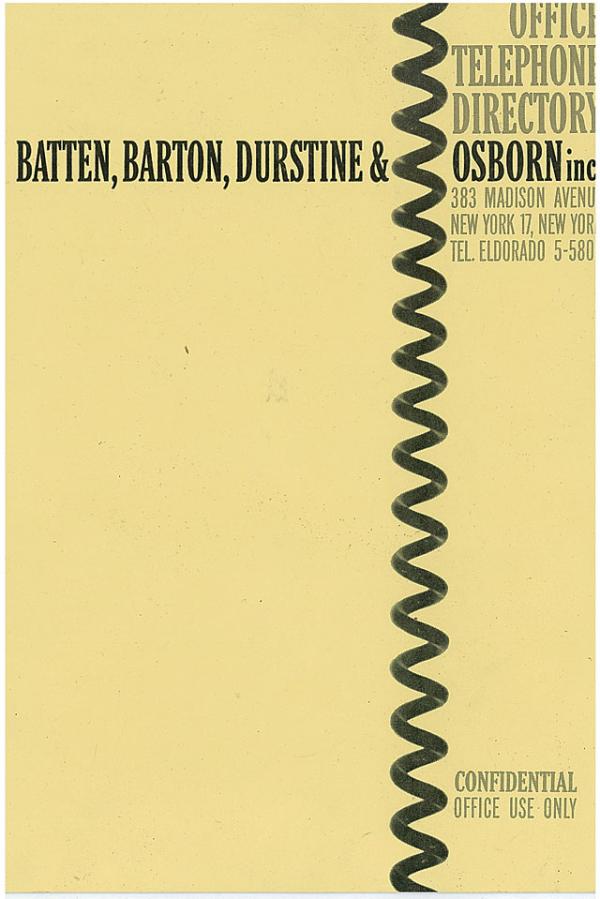
Recognition
2007 AIGA Medal
Born
1920, Birmingham, Alabama
Deceased
1975, Los Angeles, California
By Julie Lasky
September 7, 2007
Follow Us
Recognized for his pioneering contributions to the field of television graphics and for leading the way for future African-American designers.
In 1945, before Jackie Robinson played Major League baseball, or Marian Anderson sang at the Metropolitan Opera, Georg Olden, the grandson of a slave, took a job with CBS. There, as head of the network's division of on-air promotions at the dawn of television, Olden pioneered the field of broadcast graphics. Working under CBS's art director, William Golden, he supervised the identities of programs such as I Love Lucy, Lassie and Gunsmoke; helped produce the vote-tallying scoreboard for the first televised presidential election returns (the 1952 race between Dwight D. Eisenhower and Adlai E. Stevenson); and collaborated with esteemed artists and designers, including David Stone Martin, Ed Benguiat, Alex Steinweiss and Bob Gill.
Olden was widely celebrated in his day. The 1981 reference book 250 Years of Afro-American Art: An Annotated Bibliography notes that between 1951 and 1960—the year Olden left CBS to work in advertising—his name appeared 108 times in Graphis and Art Directors Club annuals. By 1970 he had won seven Clio awards and had even designed the Clio statuette in 1962, a figure inspired by Brancusi's Bird in Space sculpture. Olden was respected not only for helping to usher TV from a fledgling industry into a golden age, but also for serving as a model for black America. Ebony magazine profiled him several times in the 1950s and '60s as one who had grasped the opportunities offered by a new communications medium and risen to an executive rank. But it was far from easy. In 1954, Ebony reported that of the 72,400 people employed full-time in television, fewer than 200 were black. The jobs included “print-machine operator” and “wardrobe mistress.” “Acceptance is a matter of talent,” Olden told the magazine in 1963. “In my work I've never felt like a Negro. Maybe I've been lucky.”
By all accounts, Olden was endowed with many graces. Nina Blanchard, the writer of a 1965 Elegant magazine profile, observed that he was “awesomely handsome, extremely male, and very polite, all of which can be momentarily unsettling for a woman attempting to conduct a serious interview.” Arthur Young, a college classmate, remembered Olden's “thriving wit and sense of humor.” Eve Lee, Olden's niece, who is a professor of German at the University of Southern California, recalled, “I never saw him angry; I never saw him in a bad mood. Even when my brother [Everett] was teasing him, he just laughed it off.” The advertising luminary George Lois, who worked at CBS in the 1950s, also remembered Olden as someone who could take a joke: “I would say, 'Georg, you're one letter away from greatness!'”

CBS program titles: Alfred Hitchcock Presents and The Web.

Caricatures: Cedric Hardwicke and Thomas Dewey.

CBS program titles: Search for Tomorrow and Brotherhood Week.
Olden appeared to have settled on the unusual spelling of his first name when he was in his early twenties and occasionally sold cartoons to The New Yorker. “You have to do something to attract the attention of the magazine editors,” he later told Advertising Age in 1963. He was born George Elliott Olden in Birmingham, Alabama, on November 13, 1920, the son of a Baptist minister whose own father had escaped slavery and fought in a black regiment of the Union Army during the Civil War. Olden's mother, a New Orleans beauty from whom he apparently inherited his much admired looks, was a classically trained singer. Advised to abandon her husband for an operatic career, Olden's mother instead performed at concerts and recitals around Washington, D.C., where the couple eventually settled with Georg and his older siblings, James Clarence and Sylvia. (The latter, under her married name, Sylvia Olden Lee, grew up to be a renowned musician and teacher. She was the first person of color to work at the Metropolitan Opera, where she coached many notable divas and has been credited with helping to bring about the groundbreaking appearances of both Marian Anderson and the baritone Robert McFerrin, Sr.)
Olden attended Dunbar High School in D.C. and nearby Virginia State College before dropping out shortly after Pearl Harbor to work as a graphic designer for the Office of Strategic Services, forerunner of the CIA. When the war ended in 1945, his OSS supervisor recommended him to the agency's communications director, Colonel Lawrence W. Lowman, who in civilian life was vice president of CBS's TV division. From a one-man operation involved with six programs a week, Olden eventually headed a staff of 14 in charge of 60 weekly shows. When he joined the network in 1945, there were 16,000 TV sets in the entire U.S. By the time he left in 1960, there were 85 million sets, one for every two Americans.
Olden might have rested comfortably at CBS, but he soldiered on in corporate America, surmounting obstacles that barred many other people of color from advancement, despite the efforts of the civil rights movement. In 1960, he took a job as television group art director at the advertising agency BBDO. Ebony magazine photographed him in his windowed office on Madison Avenue and described him admiringly as “an artist, a dreamer, a designer, a thinker and a huckster.” In 1963, he joined an elite department within the ad agency McCann-Erickson. That year, he became the first African American to design a postage stamp—a broken chain commemorating the 100th anniversary of the Emancipation Proclamation. At a White House ceremony with Olden in attendance, President John F. Kennedy praised the stamp as “a reminder of the extraordinary actions in the past as well as the business of the future.”

CBS sports titles: Wrestling, Big Ten Basketball, The Masters Golf Tournament and The Kentucky Derby.

Above: Stamp honoring the Emancipation Proclamation, 1963; below: design unveiling at White House with President John F. Kennedy.

Batten, Barton, Dustine & Osborn, Inc. Office Telephone Directory.

CBS news titles: Years of Crisis and Capitol Hill to New York.
Georg Olden helped to ensure that future by inspiring other designers of color. Lowell Thompson, Michele Y. Washington and Frank Briggs are contemporary practitioners who have each claimed him as an inspiration and worked to bring his contributions to light. So it is infinitely regrettable that he soon parted company with the industries within which he blazed such notable trails. Olden died in Los Angeles in 1975, at the age of 54. In a posthumous edition of Who's Who, he supplied his own unconscious epitaph: “As the first black American to achieve an executive position with a major corporation, my goal was the same as that of Jackie Robinson in baseball: to achieve maximum respect and recognition by my peers, the industry and the public, thereby hopefully expanding acceptance of, and opportunities for, future black Americans in business.”
Olden succeeded in his ambitions. For the design field there is no higher symbol of respect and recognition than the AIGA Medal. And today there are African Americans running corporations such as Time Warner, Merrill Lynch and American Express. He left this world prematurely, but Olden is survived by his legacy of creative and professional accomplishment that deserves to be treasured.